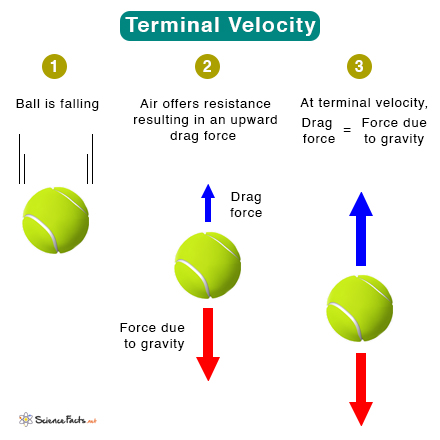Examples
How is Terminal Velocity Reached
Equation
Where, C : drag coefficient. It is dimensionless with values depending on the shape of the object. (For example, C = 0.47 for a sphere and C = 0.82 for a long cylinder) ρf : density of the fluid v : object’s velocity A : projected cross-sectional area of the object in a direction perpendicular to the object’s motion. At terminal velocity, v is replaced by vT. The drag force becomes The force due to gravity is Where, m : mass of the object g : acceleration due to gravity Since the object moves with a constant velocity, no net force is acting on it. This condition is only possible when the drag force is equal to the force due to gravity. Unit: meters per second (m/s) or miles per hour (mph)
Buoyancy Effects
When the object moves through a liquid, Archimedes Principle and buoyancy play a key role in determining its terminal velocity. The expression for terminal velocity is modified by replacing the object’s mass with its reduced mass (m – ρoV). Where ρo is the density of the object.
Viscous Fluid
If the object moves through a viscous fluid, it experiences drag force due to viscosity. According to Stokes’ law, the drag force experienced by a spherical particle is Where, Fd : drag force η : viscosity r : radius of the particle v : velocity of the particle relative to the fluid The object is subjected to drag, buoyant, and gravitational forces at any given time. The following equation gives its terminal velocity:
